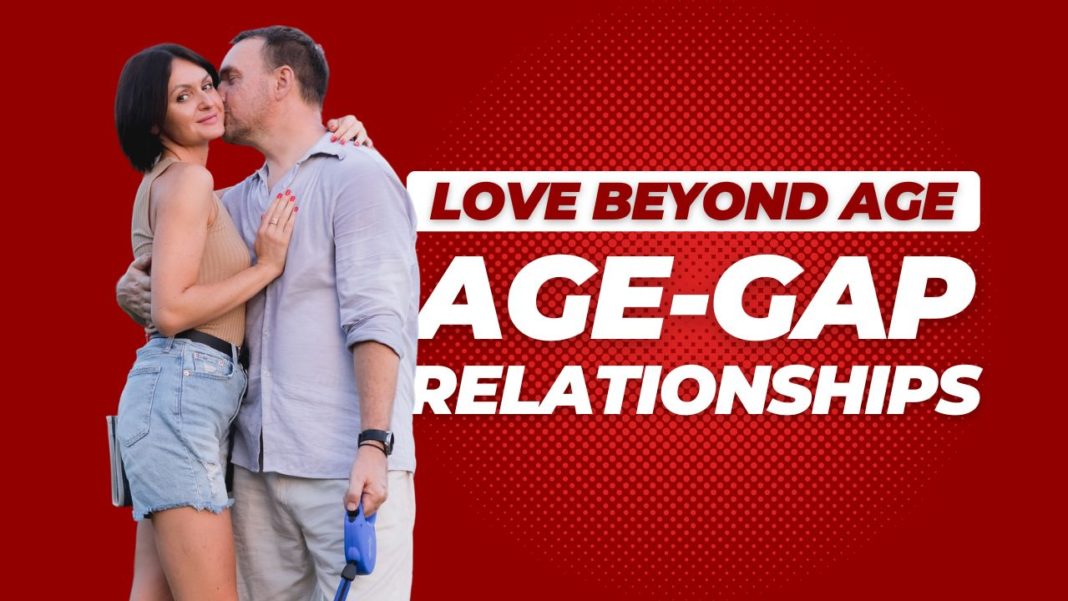Defying the Norm: Why Age-Gap Relationships Are More Common Than You Think
Age-gap relationships, often viewed through the lens of societal scrutiny or curiosity, are becoming increasingly common and accepted. As traditional views on relationships evolve, so too do perceptions of partnerships where there is a significant age difference. Rather than being exceptions to the rule, many age-gap relationships reveal that love and compatibility extend beyond age, challenging long-standing stereotypes.
Societal Perceptions of Age-Gap Relationships
Historically, age-gap relationships have often attracted mixed responses. Older men dating younger women, for instance, have typically been seen as a symbol of financial stability paired with youthful vitality. On the flip side, relationships where an older woman dates a younger man sometimes invite unfounded assumptions of novelty or “cougar” culture, often portraying them in a less serious light. These outdated stereotypes are, however, increasingly being dismantled as more people recognise the depth and authenticity that age-gap relationships can embody.
Statistics and Real-World Examples
Statistics paint an interesting picture. Studies from the UK and globally suggest that around 8% to 10% of married couples have an age difference of more than a decade. Furthermore, recent data highlights that men and women alike are showing greater openness to partners of different ages, with online dating platforms reporting significant rises in users setting broader age filters to find a compatible match.
In addition to statistics, real-world examples of couples with substantial age gaps serve to illustrate how fulfilling these relationships can be. Public figures like George and Amal Clooney (17-year age gap) or Emmanuel and Brigitte Macron (24-year age gap) highlight not only the acceptance of such relationships but also their longevity and depth. These stories reveal that a meaningful connection can transcend age, and each partner brings their unique strengths, whether it’s wisdom, energy, or shared values, to create a balanced and lasting bond.
The Psychology Behind the Attraction
Age-gap relationships often stem from a unique blend of psychological factors that go beyond simple attraction. While physical chemistry can certainly play a role, the core dynamics in these partnerships frequently involve a balance of maturity, life experience, and emotional security that both individuals find appealing.
Understanding the Psychological Drivers
For many individuals, relationships with an age gap offer qualities they may not easily find with partners of similar age. Maturity is a central factor: older partners often bring a level of emotional intelligence and stability that can be refreshing for younger individuals. This maturity translates into effective communication, conflict resolution, and a greater sense of self-assuredness, all of which contribute to a stronger foundation for long-term connection. Conversely, the younger partner may offer fresh perspectives, vitality, and spontaneity that keep the relationship vibrant.
Life experience is another profound attractor. Older partners typically possess a wealth of knowledge and insight shaped by diverse life experiences, which can be deeply appealing to a younger partner eager to learn and grow. This dynamic creates a natural mentor-student or guiding presence in the relationship, where both partners can benefit: the older partner finds purpose and renewed curiosity, while the younger partner gains wisdom and confidence.
Emotional Security and Stability
Many age-gap relationships also thrive on the emotional stability that an older partner can offer. Dr. Gary W. Lewandowski, an expert in relationship psychology, notes that emotional security often plays a significant role in these partnerships. Older individuals are typically less concerned with external validation and are more comfortable with themselves. This level of self-assurance can be incredibly attractive, particularly for younger individuals who may still be navigating their own paths. The older partner’s stability provides a comforting presence, creating an environment where both partners feel supported and understood.
On the flip side, younger partners can offer a reminder of youthful enthusiasm and ambition, which some older individuals find motivating and energising. Dr. Karl Pillemer, a gerontologist and author, suggests that “younger partners can help revitalise and inject energy into the lives of older individuals.” This exchange, where each partner brings complementary strengths, creates a balanced dynamic in which they can grow individually and as a couple.
In essence, the psychology behind attraction in age-gap relationships lies in the enriching blend of qualities each partner offers. With maturity, stability, and a wealth of life experiences on one side and youthful energy and curiosity on the other, these partnerships often forge bonds that are deeply satisfying and lasting.
Cultural Impact: Global Perspectives on Age Differences
Age-gap relationships evoke diverse responses worldwide, largely influenced by cultural norms and societal values. While some cultures embrace or even celebrate significant age differences in partnerships, others view them with scepticism or place restrictions on such relationships. Understanding these global perspectives sheds light on the unique ways societies interpret love, partnership, and compatibility.
Age-Gap Acceptance Across Cultures
In many Western countries, such as the United States, Canada, and parts of Europe, age-gap relationships have become increasingly accepted, especially as society shifts towards embracing non-traditional relationship dynamics. With growing support for personal freedom and autonomy in romantic choices, people in these regions often view age as less critical in defining compatibility. Celebrities and public figures in age-gap relationships—like Priyanka Chopra and Nick Jonas in the US—further normalise these partnerships, making them more culturally accepted.
Conversely, Asian cultures, including Japan and South Korea, may still carry more traditional views on age differences, although the trends are gradually evolving. In Japan, older men dating significantly younger women is often viewed as more acceptable, sometimes seen as a stable match due to financial security and traditional gender roles. However, couples where the woman is older may face more social scrutiny, especially from older generations, as it can challenge conventional ideas of family dynamics.
Normalisation of Age Differences in Certain Societies
In some parts of Africa and the Middle East, larger age gaps are not uncommon, especially in marriages. Many of these societies value factors such as economic stability and family connections over romantic compatibility alone, which often leads to relationships where there’s a significant age difference. For instance, in countries like Nigeria and Egypt, it’s quite common for younger women to marry older men, as the men are often viewed as more financially secure and capable of providing a stable household. However, as urbanisation and Western influences spread, younger generations in these regions are increasingly exploring more age-similar relationships based on shared interests and mutual compatibility.
In contrast, countries such as Sweden and Denmark tend to favour egalitarian partnerships, often viewing age-gap relationships with a degree of caution. Scandinavian societies value equality, mutual responsibility, and shared life stages, which can make large age differences seem somewhat misaligned with their cultural ideals of partnership.
Societies That Discourage Significant Age Gaps
In more conservative or religious societies, such as India and some Middle Eastern countries, age-gap relationships can be met with significant resistance, especially when the woman is older. Indian society, for instance, often emphasises the importance of parental approval and community expectations in romantic relationships, and age can be a significant factor in determining familial acceptance. Couples with large age gaps may struggle with familial approval and social judgement, making such relationships less common, though urban and younger communities are gradually becoming more open to diverse relationship choices.
On the other hand, some European nations, particularly Italy and France, adopt a laissez-faire attitude towards age-gap relationships. These societies celebrate romantic freedom and individual choice, often seeing age as a secondary consideration. French culture, for example, highly values love and passion, with less emphasis on traditional norms. This makes age-gap relationships more socially accepted and celebrated.
Embracing or Questioning Tradition: A Reflection of Society’s Values
Around the world, views on age-gap relationships reflect each society’s unique values, from financial stability and familial cohesion to romantic freedom and individuality. As globalisation and modernisation continue to influence cultural norms, attitudes toward age differences in relationships are evolving. While some societies embrace age-gap relationships as part of a love that transcends age, others remain more reserved, viewing significant age gaps through the lens of tradition and family expectations.
Ultimately, these diverse perspectives highlight that cultural context shapes our understanding of what constitutes a compatible and socially accepted relationship.
Legal and Social Considerations
While love may transcend age, age-gap relationships can face unique legal and social challenges. From varying laws on age of consent to societal pressures and stereotypes, couples with significant age differences often navigate a more complex landscape in maintaining their relationships. Being aware of these considerations can help couples approach their partnership with confidence and resilience.
Legal Implications
The age of consent is a crucial legal aspect, particularly for younger individuals in age-gap relationships. Laws vary significantly from country to country and even within regions. In the UK, for example, the age of consent is 16, while in some parts of the US, it ranges from 16 to 18. For couples with a considerable age difference, it’s essential to ensure that the relationship is legally permissible, especially if one partner is relatively young.
In addition to the age of consent, legal guardianship and marriage laws can come into play in age-gap relationships. Some countries require parental consent for marriage if one partner is under a certain age, while others restrict the age gap between couples to prevent exploitation. These laws are typically intended to protect younger individuals, but they can add layers of complexity for couples who are sincerely committed but must work within legal parameters.
Societal Challenges: Overcoming Stereotypes and Judgement
Society often holds preconceptions about age-gap relationships, with assumptions ranging from “midlife crises” to “seeking financial stability” or even “gold-digging.” These stereotypes can lead to unjust scrutiny or make it difficult for couples to feel accepted within their communities.
Public perception can also place undue pressure on the relationship. Friends or acquaintances might be sceptical, especially if the age difference disrupts traditional relationship norms. Family members may also have concerns about the couple’s future, particularly when it comes to goals like having children or retirement plans that are typically aligned with certain life stages.
Navigating Social Circles and Family Acceptance
Open Communication with Loved Ones: One of the most effective ways to navigate these social challenges is through honest conversations. Couples should be open with friends and family members about their relationship dynamics, acknowledging any differences while focusing on the compatibility and connection they share.
Setting Boundaries on Public Commentary: It’s important for age-gap couples to establish boundaries regarding how much they allow others’ opinions to impact their relationship. Family members and friends may offer well-meaning advice, but setting limits on unsolicited feedback can help couples focus on each other rather than public opinion.
Reinforcing a United Front: Age-gap couples who demonstrate a clear sense of unity and understanding are often more resilient to societal pressures. When couples are aligned on key issues such as future plans, lifestyle preferences, and mutual respect, they are better positioned to confront external judgement with confidence.
Navigating Public Scrutiny
In today’s social media-driven world, age-gap couples may encounter scrutiny or even criticism from strangers online. To handle such situations effectively:
Limit Social Media Exposure: Some couples may choose to keep aspects of their relationship private, especially if they feel they will face undue public judgement. Sharing less about their relationship on social media can help maintain privacy and reduce the pressure to appear “perfect.”
Focus on Trusted Support Networks: Having a small circle of supportive friends and family who genuinely accept the relationship can be invaluable. Leaning on these relationships during challenging times can help couples stay grounded and supported.
Celebrate Differences as Strengths: Age-gap couples often have unique perspectives that enrich their relationship. Embracing these differences as strengths, rather than liabilities, can help the couple feel empowered in the face of external scrutiny.
While legal and social challenges are often a reality for couples with significant age differences, adopting a proactive approach and setting boundaries can help. By maintaining open communication and finding supportive allies, age-gap couples can not only navigate these complexities but emerge with a strong and fulfilling partnership.
Challenges and Resolutions
Age-gap relationships, while often rewarding, bring unique challenges that can require thoughtful navigation. Differences in life stage, future goals, and even social expectations can create tension. However, with open communication and a proactive approach to relationship dynamics, these challenges can be effectively managed.
Common Challenges Faced by Age-Gap Couples
Differences in Life Stage: Partners with significant age differences may be at different points in their personal or professional lives. One may be building their career, while the other is contemplating retirement, or one may want to settle down while the other still seeks exploration. These contrasting priorities can lead to conflicts, especially around lifestyle choices, financial planning, and long-term commitments.
Social and Familial Acceptance: Age-gap couples often face challenges with social acceptance. Friends and family members may express concerns or judgement, potentially creating strain on the relationship. This external pressure can make it difficult for the couple to feel fully supported.
Physical and Health Differences: As age-gap couples grow older, health and physical capabilities may become an issue. While one partner may still be energetic and active, the older partner may start facing health concerns, which can affect relationship dynamics and expectations for shared activities or future plans.
Different Financial Goals and Planning: With age often comes a divergence in financial priorities. The older partner might be more focused on investments and retirement, while the younger one might still be in a growth phase, prioritising career advancement or education. This can lead to differing approaches to spending, saving, and financial commitments.
Resolutions: Communication, Boundaries, and Future Alignment
Open and Honest Communication
The foundation of a successful age-gap relationship lies in transparent communication. Couples should have regular, open conversations about their expectations and any areas of concern. Discussing differences in priorities—be it lifestyle, finances, or social activities—can help each partner understand the other’s perspective and make adjustments where possible. Active listening, where each partner fully engages with the other’s viewpoints, can reduce misunderstandings and strengthen emotional bonds.
Setting Boundaries and Managing Expectations
Boundaries are essential in age-gap relationships, particularly when it comes to handling societal judgement. Couples should agree on what they’re comfortable sharing with friends and family, as well as how they respond to unsolicited opinions. It’s important for each partner to have a clear understanding of how they’ll handle uncomfortable social situations or questions from others. By maintaining a united front, couples can shield their relationship from external pressures and focus on their shared happiness.
Aligning Future Goals Despite Age Differences
Aligning future aspirations is key to overcoming potential life-stage challenges. Age-gap couples should discuss their visions for the future, including topics like marriage, children, career transitions, and retirement. It may be helpful to break down long-term goals into short- and medium-term plans that consider both partners’ aspirations. Compromises, such as finding mutually satisfying hobbies or balancing time between career and family, can ensure that both partners feel fulfilled and understood.
Adapting to Physical and Health Needs
Acknowledging and adapting to potential health differences is also crucial. Couples should discuss how they will support each other as they age, perhaps planning activities that they both enjoy or agreeing on lifestyle habits that prioritise each other’s well-being. A practical approach to health concerns, such as regular check-ups and open discussions about physical changes, can help couples prepare for the future and prevent surprises.
Financial Planning Together
Differences in financial goals are common in age-gap relationships, but with open dialogue and joint planning, these can be reconciled. Couples should discuss budgeting, spending priorities, and long-term savings goals, considering both partners’ stages of financial development. Creating a shared financial plan that reflects both partners’ needs, while allowing room for individual pursuits, can help balance these differences. Consulting with a financial planner may also help age-gap couples strategise effectively.
While age-gap relationships face unique challenges, they also offer a wealth of opportunities for growth, mutual learning, and deep connection. By embracing open communication, setting clear boundaries, and aligning future aspirations, couples can not only overcome these challenges but build a rich and enduring partnership.
Conclusion: Bridging the Gap
Age-gap relationships, though they may face unique challenges, demonstrate that true connection transcends age. By embracing open communication, establishing boundaries, and aligning future goals, couples can navigate differences in life stage, social perception, and even health concerns with resilience and understanding.
For those considering or currently in an age-gap relationship, the empowering takeaway is clear: a successful partnership thrives not on shared birth years but on mutual respect, love, and understanding. When both partners commit to growing together, valuing each other’s experiences, and building a shared future, age becomes just a number—a detail that only adds depth to their unique journey.
Ultimately, age-gap couples have the opportunity to create a rich and enduring bond that draws from each partner’s unique strengths. By bridging the gap with empathy and commitment, these couples can build fulfilling, lasting relationships that defy societal expectations and celebrate the beauty of genuine connection.






